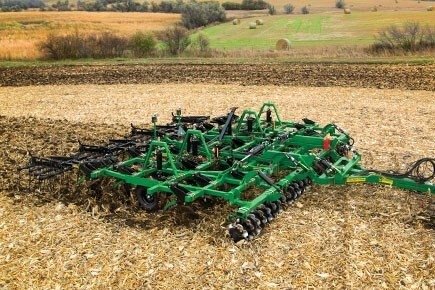
Finding the Optimal Depth: Decoding the Art of Chisel Plowing

When it comes to effective tillage practices, chisel plowing has emerged as a popular technique among farmers. This method involves using a chisel plow to break up compacted soil and prepare it for planting. One crucial factor that determines the success of chisel plowing is the depth at which it is performed. When considering chisel plowing for your farm, you’re going to want to learn more about the process, including how deep to chisel plow.
At Avonlea Farm Sales Ltd., we are your source for farming equipment and have chisel plows for sale to aid you in tilling with ease. In this blog post, we help you answer the question of how deep should you chisel plow and offer insight into the chisel plowing process. Let's explore the factors to consider and find the optimal depth for this tillage practice.
Factors Affecting Chisel Plowing Depth
When considering how to chisel plow a field, it is important to note that a variety of factors can influence what the optimal depth will be. Soil type, compaction and the type of crop being planted all play a role in considering how to use a chisel plow for optimal results. Consider the following factors when determining how to set up a chisel plow.
Soil Type and Condition - The type and condition of soil play a vital role in determining the appropriate chisel plowing depth. Sandy soils require a shallower depth, as excessive depth may lead to erosion and nutrient loss. Conversely, clayey soils benefit from deeper chiselling to break up compaction layers and improve drainage.
Soil Compaction - The degree of soil compaction is another factor that influences the chisel plowing depth. Highly compacted soil may require deeper chiselling to effectively break up hard layers, while less compacted soil might only need shallow tillage.
Crop Rotation and Objectives - The type of crops to be grown and the intended objectives also affect the chisel plowing depth. For example, deep chiselling may be necessary when transitioning from a deep-rooted crop to a shallow-rooted one. Additionally, deep chiselling can help manage crop residues and control pests or diseases in certain situations.
How to Set Up a Chisel Plow
There is no one-size-fits-all answer when it comes to optimal chisel plowing depth. Determining the ideal chisel plowing depth involves careful consideration of multiple factors, including soil type, compaction levels, and cropping objectives. While starting with a conservative approach is recommended, adjusting the depth based on soil conditions and seeking expert advice are crucial steps toward achieving optimal results. Remember to monitor and evaluate the impact of chisel plowing at different depths to refine your practices and maximize the benefits of this effective tillage.
When it comes to choosing a tilling method, the operational needs of your farm play an important role. See our post, What is a Chisel Plow and When to Use One, for more information on chisel plows. At Avonlea, we are your top choice when looking for farm equipment for sale and are always looking to help you find the best farming equipment for your needs.






